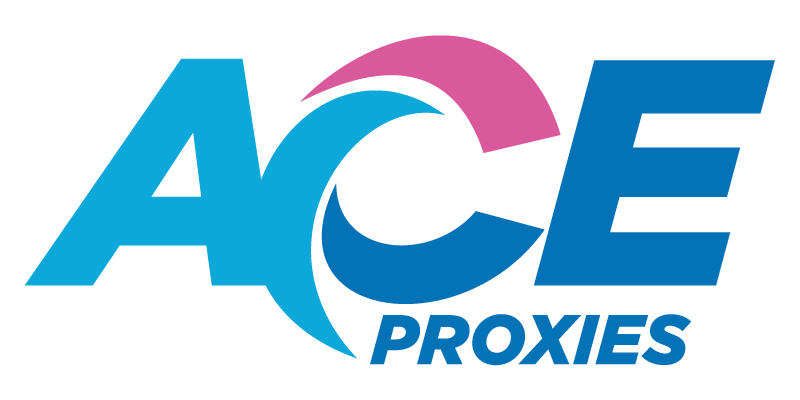Beyond IP Blocks: Reverse Engineering Competitor Proxy Strategies in 2025

In today's hyper-competitive digital landscape, data is the ultimate differentiator. While your team is busy refining its web scraping strategy to gather critical market intelligence, it's highly probable that your competitors are doing the exact same thing to you. The battle for market share is increasingly fought with scraped data – from pricing intelligence and product launches to customer sentiment and talent acquisition trends.
The question is no longer "are they scraping?" but "how are they scraping, and what can we learn from it?"
This guide moves beyond basic proxy discussions. We'll delve into the advanced, often overlooked discipline of reverse engineering competitor proxy strategies. Understanding the methods, proxy types, and tactical approaches your rivals employ offers a dual advantage: it allows you to refine your own scraping techniques for stealth and efficiency, and crucially, to build a robust defense against unwanted data extraction from your own assets. In 2025, competitive intelligence isn't just about what you scrape, but what you know about how others scrape.
Why Reverse Engineer Competitor Proxies? The Strategic Imperative
At first glance, understanding how a rival accesses public web data might seem like a niche concern. However, the insights gained can profoundly impact your strategic decisions:
- Uncover Their Data Priorities: The type of proxies, their geo-locations, and the frequency of their requests can reveal what kind of data your competitors are most interested in. Are they focused on global pricing? Localized trend analysis? Specific product reviews? This intelligence guides your own data collection efforts and highlights potential blind spots.
- Gauge Their Technical Sophistication: Are they using basic datacenter IPs or advanced rotating residential networks? Are they employing sophisticated browser emulation or simple cURL requests? Knowing their technical capabilities helps you assess their overall data strategy maturity and adjust your defensive posture.
- Refine Your Own Scraping Tactics: Learning how competitors bypass anti-bot measures, or where they might be getting blocked, can inform and improve your own scraping infrastructure and stealth techniques. It's a real-world masterclass in adaptation.
- Enhance Your Defense: If you can identify a competitor's scraping patterns, you can implement more targeted, intelligent anti-bot measures on your own websites, blocking their data flow without impacting legitimate users.
- Predict Market Moves: By understanding what data they're prioritizing, you can often predict future product developments, market entries, or strategic shifts before they become public.
The Art of Detection: Identifying Competitor Scraping Activity
Detecting competitor scraping activity requires a multi-faceted approach, combining network analysis, server-side monitoring, and behavioral pattern recognition.
1. Log File Analysis: Your First Line of Defense
Your web server logs (Apache, Nginx, CDN logs) are a goldmine. Look for:
- Unusual Request Spikes: Sudden, sustained increases in traffic from a specific IP range or user-agent string.
- Sequential Page Access: Rapid navigation through product catalogs, search results, or profile pages in a highly ordered, non-human fashion.
- Repeated Access to Specific Data Points: Consistent requests for pricing data, stock levels, or product specifications.
- Origin IP Anomaly: Traffic from commercial IP ranges (often datacenter proxies) or a high volume of requests from multiple, rapidly changing residential IPs in unusual geographic locations.
- "Empty" Referrers or Unnatural Referrer Chains: Legitimate users typically have a referrer. Scrapers often lack one or have an inconsistent, rapidly changing referrer.
2. User-Agent Fingerprinting: Beyond the Obvious
While basic scrapers might use generic user-agents, sophisticated ones often mimic real browsers.
However, look for:
- Identical User-Agents Across Disparate IPs: If multiple IPs from different geographic locations consistently use the exact same specific User-Agent string, it's a strong indicator of an orchestrated scraping operation.
- Browser Version Discrepancies: A User-Agent claiming a specific browser version, but network requests revealing older TLS versions or peculiar header ordering inconsistent with that browser.
- Lack of Browser-Specific Headers: Real browsers send a rich set of headers (Accept-Language, Accept-Encoding, Cache-Control). Missing or inconsistent headers can reveal a bot.
Browser Fingerprinting for Web Scraping: The 2025 Playbook
3. Behavioral Analytics: Unmasking the "Human" Bot
Advanced anti-bot systems use JavaScript challenges and behavioral patterns to identify bots. You can use similar methods to detect competitor scrapers:
- Mouse Movement & Click Tracking: Legitimate users exhibit natural, albeit imperfect, mouse movements and varied click patterns. Bots often have perfectly straight movements, exact click coordinates, or impossibly fast navigation.
- Session Duration & Conversion Rate: Bots typically have very short session durations on pages, rarely interact with forms, and have a 0% conversion rate.
- CAPTCHA Challenge Frequency: If you deploy CAPTCHAs, monitor IPs that consistently fail them or solve them with unnatural speed (if they're using CAPTCHA solving services).
Reverse Engineering Their Proxy Type & Strategy
Once you've identified suspicious activity, the next step is to deduce what kind of proxies they're using and how they're deploying them.
1. IP Reputation & ASN Lookup:
Tools like WHOIS, IP reputation services, and ASN (Autonomous System Number) lookups can reveal:
- Datacenter vs. Residential: IPs associated with hosting providers (datacenter) are easier to block. IPs from ISPs (residential) are harder to distinguish from real users.
- Geographic Distribution: Are IPs concentrated in specific regions, or are they globally distributed? This indicates their target markets or where they need local price data.
- Proxy Provider Association: Sometimes, IP ranges are publicly known to belong to specific proxy services.
2. Request Rate & Rotation Patterns:
- Rapid IP Cycling: If you see rapid changes in IP addresses from the same User-Agent or accessing the same content, they are likely using Rotating Residential Proxies. This suggests they prioritize anonymity and high-volume data collection across a wide footprint.
- Consistent IP for Extended Periods: If a suspicious IP remains constant for several hours or days while performing continuous, structured requests, it could be a Static Residential (ISP) Proxy or a dedicated datacenter proxy. This often implies a need for session persistence or a more targeted, less "bursty" data collection.
- Traffic Volume: High-volume traffic from a single IP or a small pool of IPs points to datacenter proxies. Distributed, lower-volume traffic across many unique IPs points to residential.
3. Response to Blocks:
How do they react when you implement an IP block or a CAPTCHA?
- Immediate IP Change: Indicates a large, rotating proxy pool.
- Switch to a New User-Agent: Suggests they're actively managing their scraping profiles.
- Persistent Attempts from Same IP (then eventual drop-off): Might indicate a smaller, more dedicated proxy pool or even a human-managed scraping operation.
Leveraging This Intelligence: Offensive & Defensive Strategies
Understanding your competitors' proxy strategies empowers you to act.
Offensive: Improve Your Own Scraping
- Mimic Their Successes: If a competitor is effectively scraping a difficult target, analyze how they're doing it. Are they using specific geo-locations? Different User-Agents? A particular rotation strategy? Implement these insights into your own Rotating Residential Proxies deployments for better success rates.
- Exploit Their Weaknesses: If you identify a competitor relying heavily on easily detectable datacenter proxies for a specific data set, it means they might struggle if that target implements more aggressive anti-bot measures. This could be an opportunity for you to gain an exclusive data stream using more robust Static Residential (ISP) Proxies.
- Target Their Blind Spots: If their proxy usage indicates a focus on specific regions or data types, you can direct your efforts to less-monitored areas to gain unique insights.
Defensive: Protect Your Own Data
- Targeted IP Blocks: Once you've identified competitor proxy IP ranges or patterns, implement specific, dynamic blocks on your firewalls or CDN. This is more effective than blanket blocks that can impact legitimate users.
- Advanced Anti-Bot Measures: Deploy sophisticated behavioral analytics, browser fingerprinting detection (as discussed in Browser Fingerprinting for Web Scraping: The 2025 Playbook, and JavaScript challenges that specifically target bot-like behavior you've identified.
- Rate Limiting by Session/Behavior, Not Just IP: Implement intelligent rate limiting that considers factors like session duration, navigation patterns, and form interactions, rather than just IP request volume, which rotating proxies easily bypass.
- Honeypots & CAPTCHAs: Strategically place hidden links or CAPTCHAs that only bots would trigger, allowing you to identify and log their activity without impacting human users.
The Ace Proxies Advantage: Your Partner in Competitive Intelligence
In 2025, the competitive landscape is a digital battlefield where data is ammunition. Understanding not just what your rivals are doing, but how they're gathering the intelligence to do it, is a critical strategic advantage. Ace Proxies provides the diverse, high-quality proxy infrastructure you need for both your offensive data collection and your defensive intelligence gathering.
Our advanced proxy types – from rapidly Rotating Residential Proxies to stable Static Residential (ISP) Proxies – empower you to:
- Execute highly stealthy and geo-targeted scraping operations.
- Mask your own data collection footprint effectively.
- Analyze competitor scraping patterns with precision.
- Defend your valuable data assets with intelligent, adaptive strategies.
Don't let your competitors get an unchecked data advantage. Turn the tables.
Gain Your Competitive Edge with Ace Proxies
Still grappling with proxy fundamentals? Don't miss our deep dive into Active IPs vs Pool Size: The Proxy Metric Nobody Talks About
